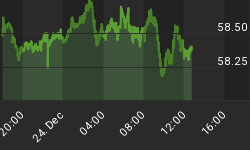In the coming months, EURUSD could rebound to 1.32 and eventually to 1.36, if the level of 1.3270 is overcome.
The Eurozone has bottomed, but the recovery is weak.
Germany is leading the way, despite a slowdown in the economic activity. During the first quarter of 2013, the household consumption was the only supportive component of growth. Exports have been declining for the second straight quarter. Household saving rate is falling as well and reached the lowest level in ten years. German growth has been weaker during the first part of the year. Nonetheless, recent data from the Purchasing Managers Index (PMI) and the IFO business survey confirmed the worst might be over. The IFO business climate index rose to 105.7 supported by current conditions, which are now near February highs. The eurozone confidence rose a bit in May according to the European Commission with Germany again leading the way by almost ten points above the other European countries. Confidence rose in all sectors with the exception of construction. Inflation stays, at the contrary, very low and could help another rate cut in the coming months, if necessary. The US dollar index is extremely overbought, accordingly to the latest Cot report. It tends to be strong until mid-year and then decline toward year's and. EURUSD could rebound to 1.32 and eventually to 1.36, ifthe level of 1.3270 is overcome
The Fed is not tightening for now.
In the US, durable new order rose 3.3% month-on-month in April. Transportation numbers were strong at +8.1% and defence rose instead 37%. Unfilled new orders, which anticipate forward production, were good at 0.8% month-on-month. As a result, the GDP should stay well supported in the second quarter of this year, after having grown 2.5% in the first quarter. Considering past experiences, the Federal Reserve is very cautious about ending quantitative easing and beginning a different monetary policy (tightening). As a result, the Fed is preparing the public with different, and sometimes contradictory, communication notices. Q3 should remain in place until the unemployment rate has shown a decisive trend on the downside. In the mean time, the housing market is confirming the good performance shown during the last part of 2012 and home prices rose more than 14% in April. The history of seasonal cycle shows that stocks can peak in June and decline toward September. Let us see if this year will be differentor if a correction to 1500 will take place instead.
















